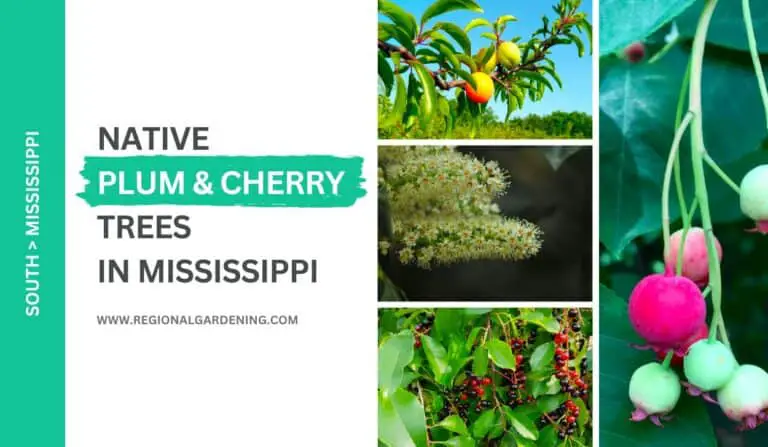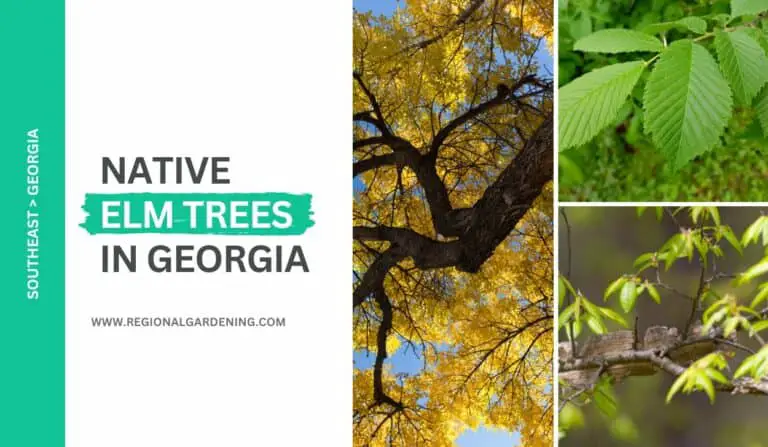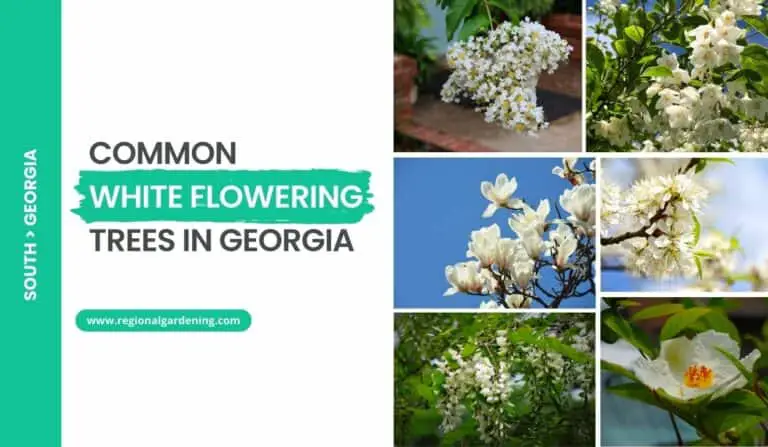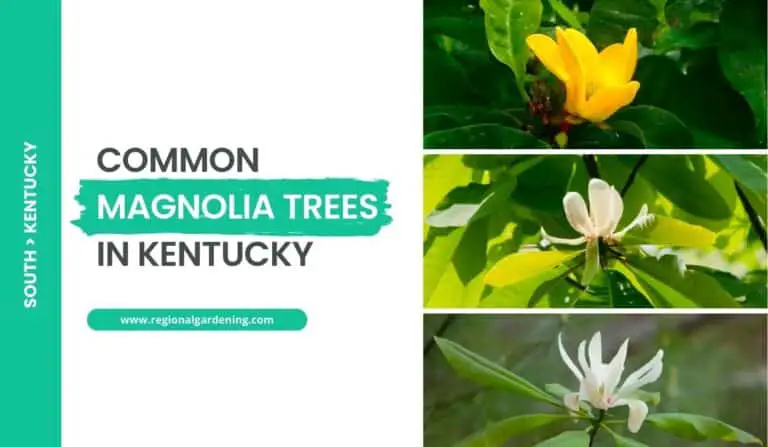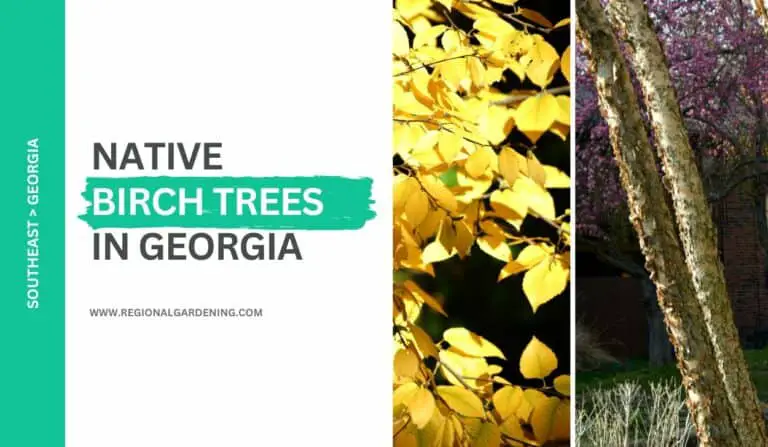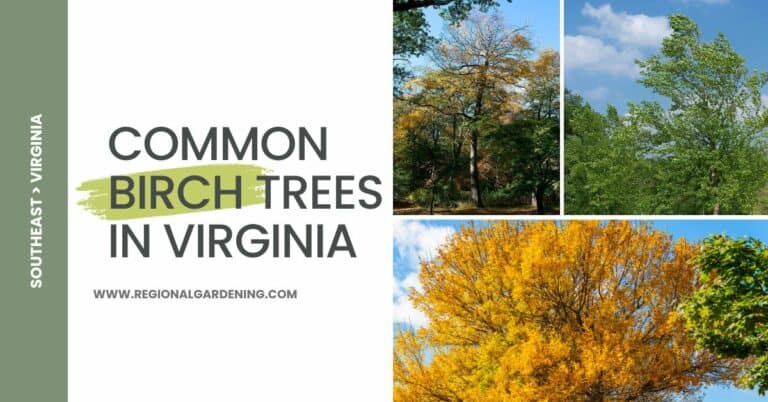4 Common Native Hickory Trees In Virginia (Pictures & Identification)
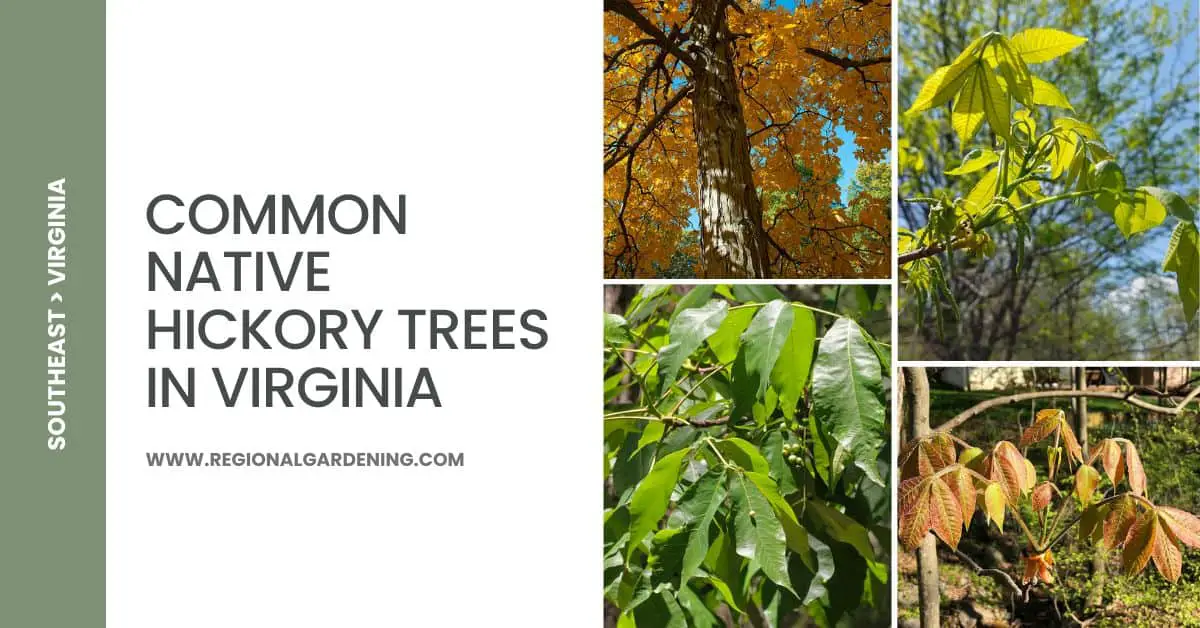
If you are looking to add some hickory trees to your Virginia backyard, then you are in luck. Virginia is home to a variety of hickory trees from the Piedmont Region to the Blueridge mountains.
In this article, we will take a closer look at 4 of the most commonly found native hickory trees in Virginia. Each tree is included with pictures and unique characteristics that help you to identify them easily.
So without wasting any more time, let’s get started.
1. Mockernut Hickory
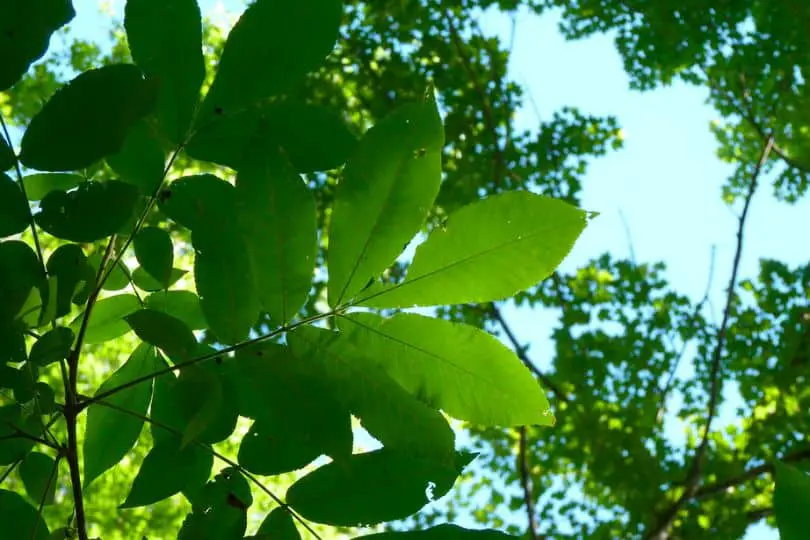
Mockernut hickory is commonly known by many names like n as White Hickory, Whiteheart Hickory, and Big-Bud Hickory. These are majestic trees that can reach 100 ft tall pretty easily.
Also, believe it or not, Mockernut hickory trees can leave more than 500 years. If you plant them now, the shade and other advantages of this majestic beauty can be enjoyed by generations to come.
It thrives in rich, well-drained soils and grows to its full potential in locations with good drainage. Its leaves are alternate and pinnately complex, measuring between 8 and 12 inches in length. It typically has 7 to 9 (but occasionally only 5) narrow, sharp-pointed, sharply serrated leaflets that are dark green on top and hairy orange-brown on the underside.
The color of white hickory barks ranges from grey to black and is highly furrowed, giving the appearance of being interwoven or netted. It features bushy, hairy twigs that resemble monkey faces, and the leaf scars on its leaves are three-lobed.
Because of its hardness, resilience, and strength, wood is utilized in the manufacturing of handles for tools, skis, baseball bats, furniture, fuelwood, timber, charcoal, and smoked meats.
2. Shagbark Hickory
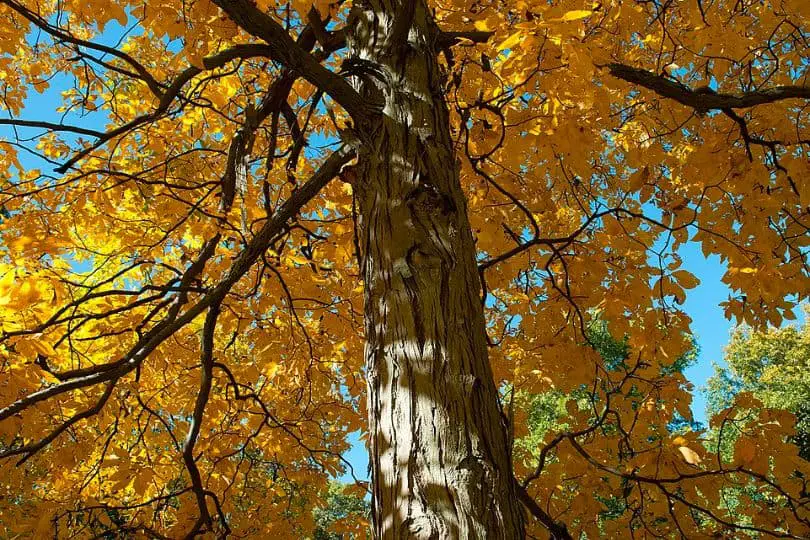
Shagbark is an amazing tree that can grow up to 120ft making them one of the tallest native hickory trees in Virginia. It has a tall, straight trunk with an open round or oblong crown.
Shagbark Hickory is also known by other names like Scalybark Hickory or the Shellbark Hickory. In nature, they are found in rich and moist soil beside streams and on moist hillsides.
Its leaves are alternating, pinnately complex, 8 to 14 inches in length, with 5 (or rarely 7) leaflets that are tapering, smooth, and sawlike edges. The male flowers are catkins that are yellowish green and hang in groups of three, while the female flowers are very short and clustered at the very end of the branches.
Its nuts are virtually spherical, ranging from 1.5 to 2 inches in diameter. When mature, they also have a very thick and 4-lobed husk that separates down to their root. Additionally, its bark has a light gray color and peels away in thick plates that are at least one foot long and curl outward at both ends.
The sturdy and resilient wood of this tree is put to use in a wide variety of applications, including handles for tools, furniture, flooring, sporting goods, charcoal, and fuelwood. Not only do many different species of wildlife use its nuts, but a significant number of early Native Americans relied on them as a primary source of nutrition.
3. Pignut Hickory

Pignut hickory is one of the most commonly seen hickory trees in Virginian landscapes. These trees are known for having quite a few characteristics.
To start with, fully grown Pignut hickory trees can reach heights of 50–75 feet, with a diameter of 1–3 feet. It forms a tall and thin crown with spreading branches.
In nature, they are usually found in regions like drier soils of slopes, ridge tops, and moister upland areas. There are 5 (sometimes 7) narrowly pointed leaflets on each of the 8–12-inch long, alternating, pinnately complex leaves.
The male flowers are 2–3 inches long and drooping in the form of catkins, with three dangling from a single stalk; the female flowers are much shorter and arranged in clusters at the very tips of the branches. The fruit is pear- or almost round-shaped, and it is between one and two inches in length.
Pignut hickory can be easily distinguished by its bark, which is smooth and light gray on young trees. However, scaly ridges are developed quickly as the tree matures. The bark of mature trees is a much darker gray and features noticeable interlacing, shaggy-topped ridges.
Pignut hickory is an important resource because of its wood, which is heavy, durable, strong, and flexible. Its strength and resistance to impact make it ideal for uses such as tool handles and skis.
On top of all that, it makes for excellent firewood. Squirrels, chipmunks, turkeys, black bears, foxes, rabbits, and raccoons all enjoy Pignut hickory nuts, making this tree an essential source of nutrition for wild animals.
4. Bitternut Hickory
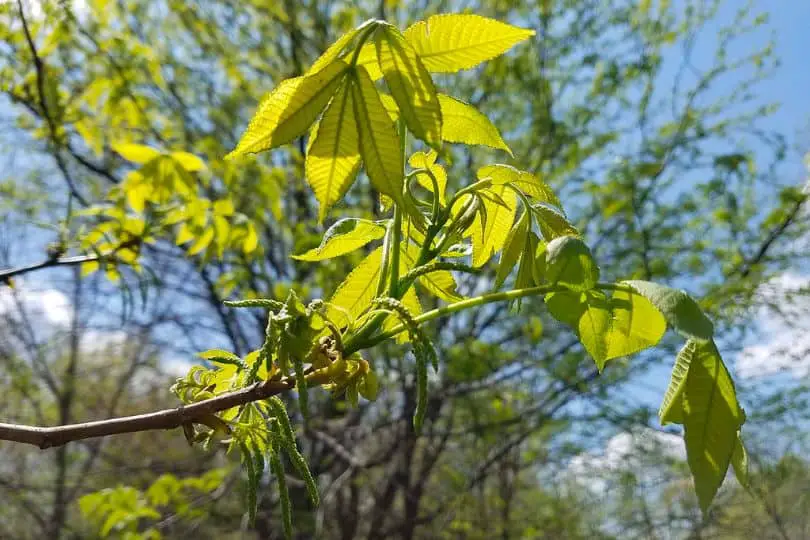
Bitternut Hickory (Swamp Hickory) is another commonly found hickory tree in Virginia plans and hillsides. They have a straight trunk and large pyramid-shaped or rounded crown which mature to 50–70 feet tall and 1–2 feet wide. They are not that tall when compared to other varieties we’ve seen so far.
It prefers damp, fertile slopes and bottomlands but can survive in dry soils. The tree’s alternating, pinnately complex leaves are 7–10 inches long with 7–9 oval, toothed leaflets, dark yellow-green above and paler below.
The tree’s yellow-green blooms are males on 3–4-inch, drooping catkins with 3 hanging from one stalk, and females short, 4-angled, at the twig, ends. After flowering, the small spherical fruit is developed.
The husk is thin, 4-winged above the middle and dusty yellow. The tree’s firm, heavy, reddish-brown heartwood is used for tool handles, furniture, paneling, flooring, pallets, crates, fuelwood, pulpwood, lumber, charcoal, and smoking meats.
Similar Articles
- 14 Native Oak Trees In Virginia
- 5 Native Maple Trees In Virginia
- 3 Common Cedar Trees In Virginia
- 6 Purple Trees In Virginia
- 3 Common Birch Trees In Virginia
- 8 Native Pine Trees In Virginia
- 9 Common Nut Trees In Virginia
- 3 Native Elm Trees In Virginia
- 2 Native Ash Trees In Virginia
- 7 Native Evergreen Trees In Virginia
- 8 Native Flowering Trees In Virginia
- 2 Common Locust Trees In Virginia
- Common Palm Trees In Virginia
- 6 Pink Flowering Trees In Virginia
Native Hickory Trees In Virginia – Frequently Asked Questions (FAQs)
Here are some of the very commonly asked questions asked on the internet related to hickory trees in Virginia.
What hickory trees grow in Virginia?
Virginia is native to quite a few hickory trees. The most commonly seen varieties are Mockernut Hickory, Shagbark Hickory, Pignut Hickory, and Bitternut Hickory.
Can you eat hickory nuts growing in Virginia?
The hickory nut is edible and is one of the most calorie-dense nuts obtained from wild trees. They can be eaten raw or roasted depending on your preferences. However, they have a very tough shells, and opening them is challenging without hammers or nutcrackers. These nuts have a rich and sweet flavor that is often used in cooking and baking.
Which region has the most hickory trees in Virginia?
Hickory trees may be found all across Virginia, although they are most prevalent in the state’s western and central areas. There are a lot of hickory trees in the Appalachian Mountains, which are located in central and western Virginia. Varieties, such as the pignut, shagbark, and mockernut varieties, are found in abundance in the Blue Ridge Mountains, which are a component of the Appalachian Mountains. Additionally, there are a lot of hickory trees in the Piedmont area, which is in the middle of the state.
Sources
The Regional Gardening team ensures the credibility of the information presented in our articles by exclusively utilizing sources of a reputable nature. These sources include peer-reviewed journals published in esteemed universities and scientific research institutions.


